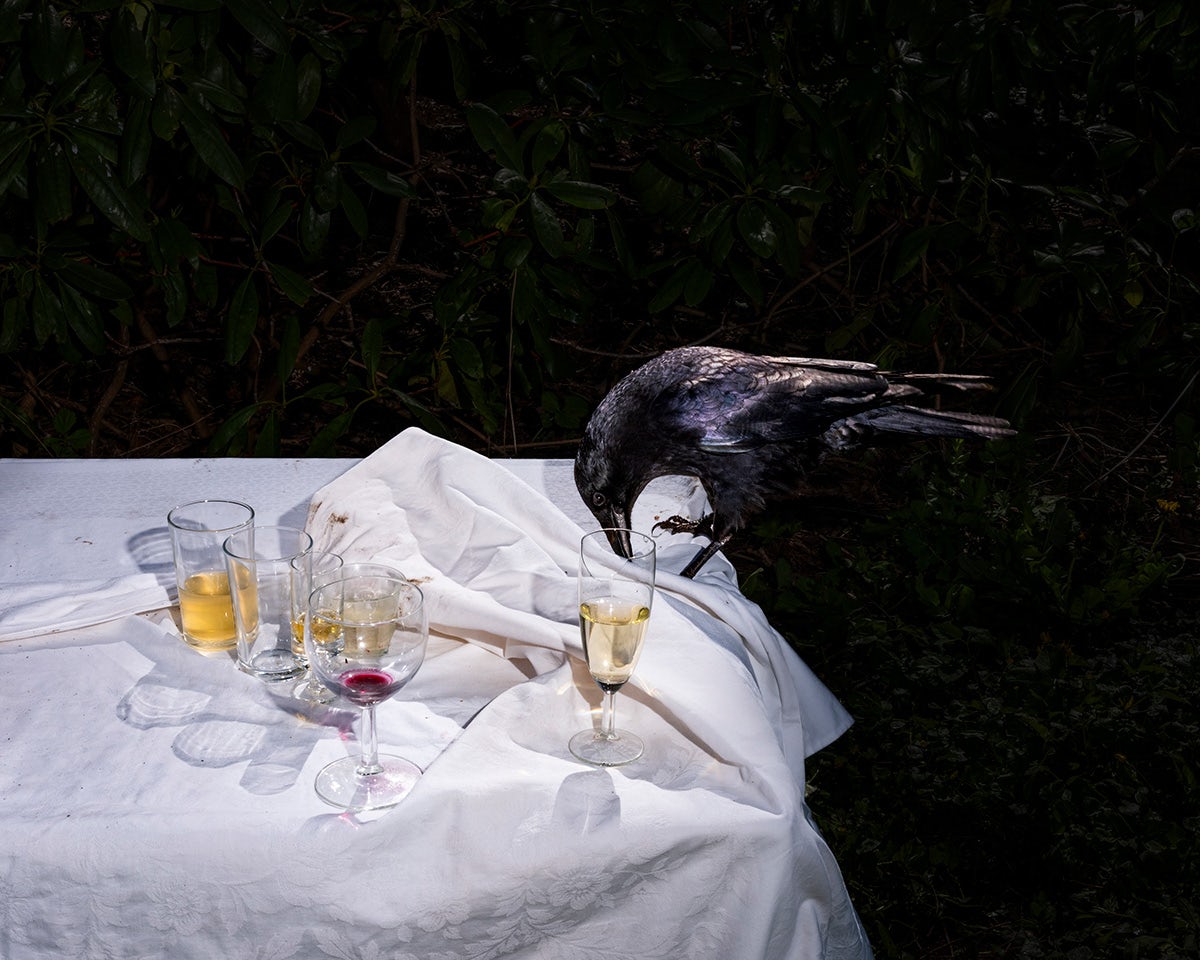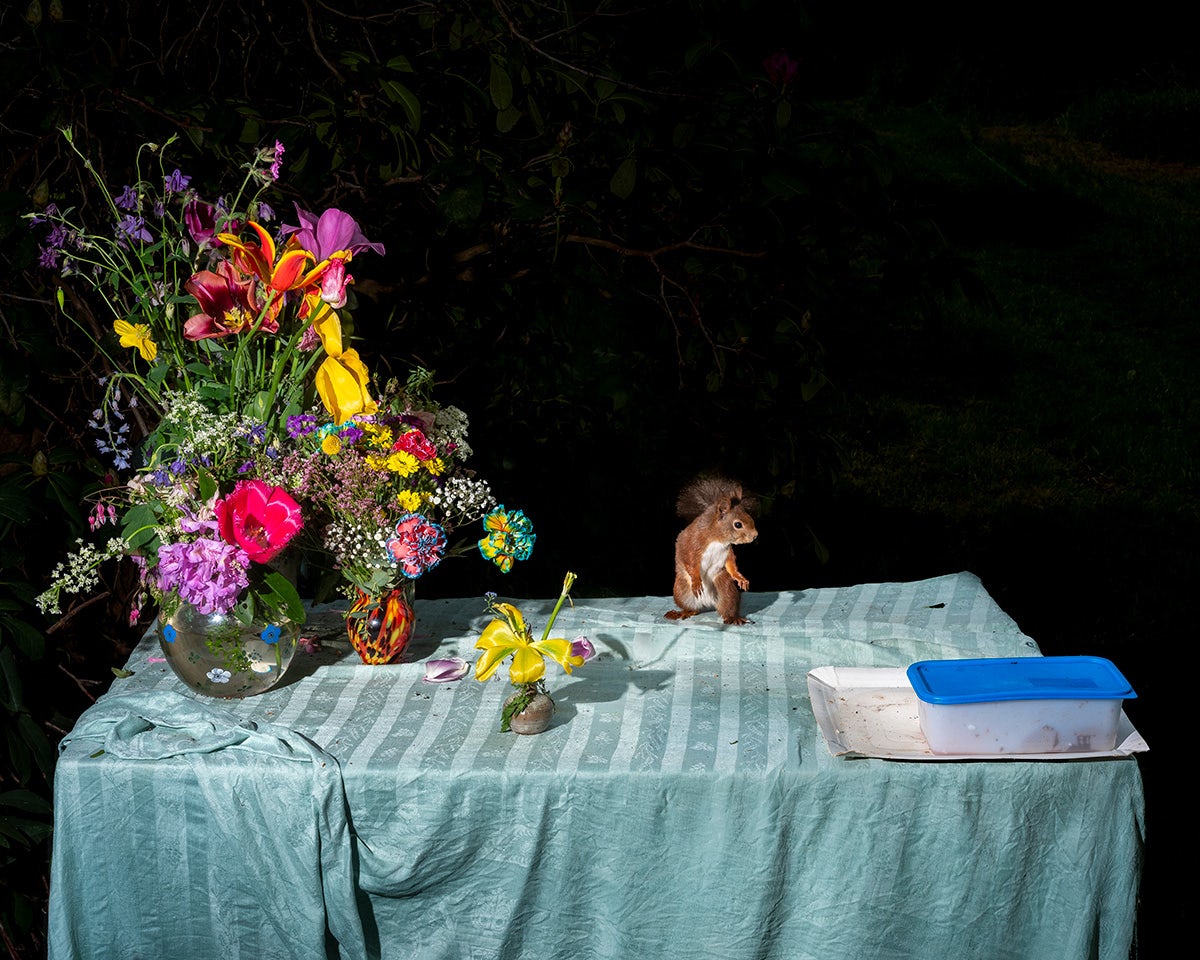Lia Darjes photographs clandestine garden diners
The Berlin-born photographer’s new book documents the animals that pass through our gardens in the style of Dutch Golden Age paintings
“I love still lifes,” says photographer Lia Darjes. “And I love creating or finding them. I’m interested in what objects and materials, and the way they ‘interact’ with each other, can tell us about human life and its relationship to the environment.”
While she has explored this in past projects, Darjes’ new book, Plates I-XXXI, isn’t strictly a still life work. Her photographs of garden tables strewn with vases and crumbs of leftover food feel in keeping with still life tradition, drawing particular inspiration from Dutch Golden Age paintings with their dramatic lighting, darkened backgrounds and slightly undone quality. However Darjes’ scenes are embellished with some unexpected participants that are very much alive.

“It started in the middle of the first lockdown, when I had just had my second child. I was relaxing with my baby by the window, breastfeeding, which is a special state of mind: passive but active at the same time, and I was gazing out the window into the garden when I saw a squirrel jump on our table,” she explains. “It was instantaneous. This disturbance on the table, which can so easily become a stage. Would I be able to recreate it?”
Darjes spent the next four years documenting these passers-by, from insects to racoons, setting up a motion activated camera and leaving the rest to nature. “For the first few months, the technical side of this project was the most challenging part. This felt strange to me because my approach to photography has never been a technical one. I find technical solutions to my visions, not the other way around. Being forced to delve so deeply into technical issues discouraged me quite a bit.”

Darjes eventually landed on a weatherproof camera that was triggered by movement – an arms-length approach that gave a wider berth to the animals to behave naturally. On the one hand, they assimilate into Darjes’ compositions: in one image, a mouse blends into a tablecloth decorated in a bird pattern. On the other, the still lifes are animated by the animals’ actions (say goodbye to that fruit).
The work, which is also being displayed at Robert Morat Gallery in Berlin from September, taught her a lot about the animals’ behaviour as she observed them encroach further on human spaces – or rather recoup those spaces. “What I find fascinating is that this proximity has also changed, analogously to human history.” For Darjes, who also runs the Berlin-based photo school Ostkreuzschule für Fotografie with her colleague Jörg Brüggemann, this has clearly been a research-based project.

“If a blackbird sings outside my window today, that’s something new: its ancestors only arrived in cities in the 19th century, before that it was a shy forest bird. City pigeons, on the other hand, come from man-made dovecots, and because they always return to the place where they were born, they now characterise entire cityscapes.
“In 1945, about two dozen raccoons escaped from a fur farm in Brandenburg. Brandenburg’s entire raccoon population (and plague) can be traced back to this escape. Since then, they have made the gardens and front yards of residents unsafe: raccoons are skilled predators. As biodiversity generally declines, some species are able to escape into human habitats and take advantage of the benefits of human habitation.”
That may be a sad truth, but this coexistence has nonetheless captured the imagination of people, Darjes notes. “In cultural history, it is often the animals that are humanised. In Cinderella, for example, pigeons announce that there is blood in the slipper.” The reference is pertinent: Plates I-XXXI may be stylistically similar to Dutch still lifes, but it also has the anthropomorphic charm of a Disney or a Studio Ghibli great.

Plates I-XXXI is published by Chose Commune; chosecommune.com














